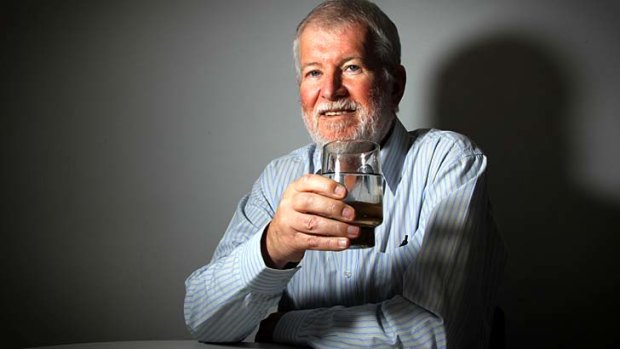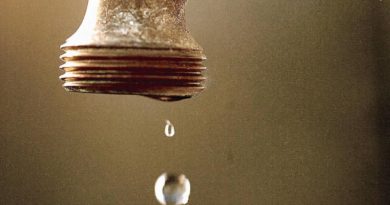The tooth hurts: dental expert is eager to expose the cavities in fluoride conspiracy theories
This was published 10 years ago
The evidence in favour of water fluoridation is crystal clear and compelling for this Sydney academic.
By Julie Power
As a young dentist, Australia’s leading expert on fluoride, Professor Wendell Evans, spent a year peering into the mouths of 1500 five-year-old children.
The man who has spent the past 38 years studying the benefits of fluoride started his career by examining five or six children’s teeth a day, usually on their fifth birthday.

Proponent: Professor Wendell Evans.Credit: Ben Rushton
This year-long project in 1975 was part of a ground-breaking longitudinal study into the impact of fluoridation of the water supply on children in his native New Zealand. ”It was a very clear result,” he says. The children who were born and bred in the fluoridated NZ town of Dunedin had half the decay of those in areas without fluoridated water.
Evans – now one of Australia’s foremost experts on fluoridation and tooth decay – went on to do similar studies, including one in 2003 that compared the teeth of schoolchildren in the Blue Mountains, which didn’t have fluoridation until 1993, with children with fluoridation in the Hawkesbury.
They also looked at the impact of fluoridation 10 years after it had been introduced. ”The difference between two groups was dramatic,” he says. ”Compared with before, there had been a 70 per cent reduction in decay.”
He did similar studies in Lithgow, with comparable results.
Before fluoridation, he says, the average 12-year-old Sydney or New Zealand child (including him, he admits) had more than nine teeth that were rotten, decayed, filled or extracted. Water fluoridation cut that rate by half. With fluoride toothpaste, the results improved even more.
Today, most dentists will see only one hole in every two 12-year-old children (an average of half a hole for each 12-year-old child). That is unless they live in areas of NSW without fluoride, such as the northern NSW towns of Lismore, Ballina and Byron Bay, where children have 2½ times the holes as other kids, and twice the rate of hospitalisation for mass extraction of rotten teeth.
To show the impact of fluoridation, Evans says when he was a boy only 1 per cent of adults had no decay.
Ten years after fluoridation was introduced, 20 per cent had no decay. Now as much as 60 per cent of the adult population have no tooth decay at all.
Today, when Evans lectures at Sydney University, where he is head of community oral health and epidemiology at the faculty of dentistry, he finds as many as 70 per cent of university students don’t have any cavities.
Despite all this evidence, Ireland is the only country in the world that has federal legislation mandating the fluoridation of the water supply.
In Australia, the laws vary by state, as does the extent of fluoridation. Queensland and the Northern Territory have the lowest levels of fluoridation, with about 80 per cent and 70 per cent respectively. Since the beginning of the year, 17 Queensland councils, including Mount Isa and Rockhampton, have voted to either stop adding fluoride or have stopped moves to build fluoridation plants.
This followed the decision by the Newman government, influenced by Liberal National Party members who claim fluoride is poison, to let individual councils decide. In NSW, about 94 per cent of people have fluoridated water supply. According to Australian Dental Association data, about 20 councils don’t have fluoridated water supplies, including Boorowa, Brewarrina, Cabonne, Carrathool, the Liverpool Plains surrounding Gunnedah, Murrumbidgee, Narrabri, Narrandera, Narromine and Oberon.
In August, Ballina Council voted eight to two to proceed with fluoridation despite some opposition from councillors, some of whom claimed it infringed individual rights to choose.
Lismore voted against proceeding, with the anti-fluoride campaign claiming it was poison. It faces a motion to overturn the vote this month. Byron voted years ago against proceeding and has only this week announced that it will review its position.
When asked about the current debate on fluoridation, Evans sounds fed up. He says towns that voted to stop or not proceed with fluoridation would go back to increased levels of tooth decay.
”It is just shocking,” he says of these councils’ decisions.
He is also frustrated that state and federal governments don’t take a ”firm enough stand” on the issue, even though they were aware of the benefits and cost savings.
”Fluoridation costs less than $1 per person – and in a big city like Sydney, it is less than 50¢ – a year,” he says.
”So if you think of five fillings per person instead, that is a tremendous cost to the community. I just wish that this argument would go away and ministers for health would be more helpful.”
Evans has recently been working on a program to put fluoride sealant on the first molars of children in Cambodia: ”When a child [in Cambodia] opens his or her mouth, you see a lot of cavities, and very broken down teeth, like it used to be in Australia and in New Zealand before water fluoridation.”
In some parts of NSW, especially in areas without fluoridation, Evans has seen teeth similar to those in Cambodia.
”There are some children … who have bottles of juice and stuff their mothers give them to keep them quiet, and they suck away, and their teeth rot away and it is just frightful, and they have no fluoride,” he says. ”It happens everywhere, but it is always worse in the non-fluoridated area.”
While fluoridation benefits all Australians, the poor suffer the most because they don’t have access to preventive care and treatment.
Evans says the latest oral health study showed it also protected older people as well as young, improving the oral health of older Australians by 50 per cent.
Is there any research that would make a parent hesitate about giving fluoride?
”No, there is nothing at all. It is totally a natural substance,” he says, adding that fluoride is a naturally occurring element in the water supply around the world.
In Australia, the water supply is topped up to reach one part for every million parts water, the equivalent of one milligram a litre.
”It is not a risk factor for anything, despite the fact that the anti-fluoride activists claim it causes everything – from cancer to birth defects and anything you can think of, they claim it is responsible.”
Even a larger dose of fluoride than recommended, which causes tooth mottling called fluorosis, may make people’s teeth abnormally white, but it also strengthens their resistance to decay, he says.
Most Viewed in National
This article has been archived for your research. The original version from Sydney Morning Herald can be found here.


